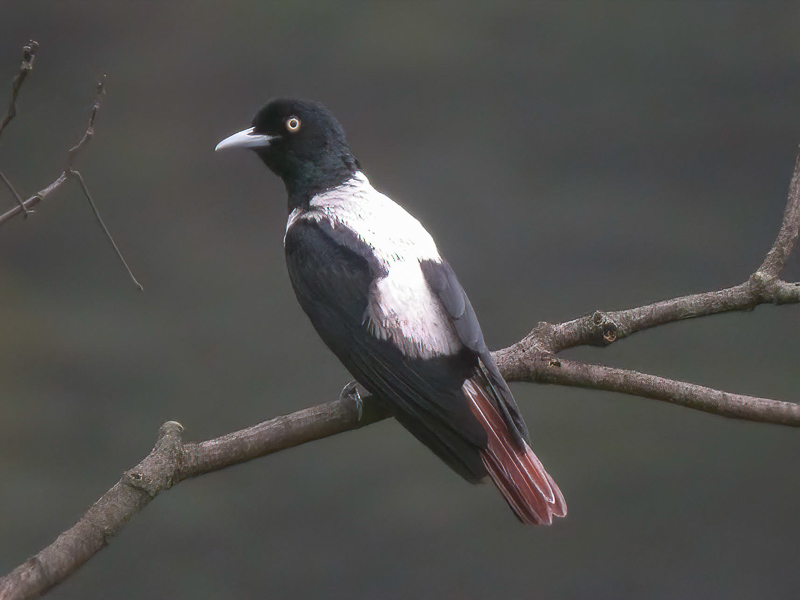Silver Oriole 鵲色鸝 Oriolus mellianus
Category I. Accidental.
IDENTIFICATION

Nov. 2018, Michelle and Peter Wong. First-winter.
28 cm. All birds have a pale greyish bill, though immatures such as this have a diffuse dark tip. Females have a blackish head contrasting with grey mantle, slightly browner rump and dark greyish wings and wing coverts, maroon tail, whitish underparts streaked black or dark grey and pinkish undertail coverts. First-years are similar but have whitish tips to the greater coverts, buff undertail coverts and a dull tail.

Apr. 2004, Nanling, Guangdong, China. Mike Kilburn. Adult male.
Adult male has silvery mantle, back, chest and belly contrasting sharply with black head, throat, wings and wing coverts. The undertail coverts are whitish to pink, the tail is maroon and the iris pale yellow.
VOCALISATIONS
Typical Oriolus calls are given in the form of a fluty note and a harsh, inflected ‘kyaar’. Xeno-canto does not permit access to recordings of this species.
DISTRIBUTION & HABITAT PREFERENCE
The sole record occurred on the migrant hotspot of Po Toi.
OCCURRENCE
2018: a first-winter bird on Po Toi on 29 November (Wong 2021).
BEHAVIOUR, FORAGING & DIET
No observations.
RANGE & SYSTEMATICS
Monotypic. Disjunct breeding areas in south central China (south central Sichuan, northeast Yunnan, Guizhou, north Guangxi and north Guangdong; winters in south Thailand and west Cambodia (Walther and Jones 2020).
CONSERVATION STATUS
IUCN: ENDANGERED. Population size 1,000-2,499 and decreasing due to habitat loss and fragmentation.
Walther, B. and P. Jones (2020). Silver Oriole (Oriolus mellianus), version 1.0. In Birds of the World (J. del Hoyo, A. Elliott, J. Sargatal, D. A. Christie, and E. de Juana, Editors). Cornell Lab of Ornithology, Ithaca, NY, USA. https://doi.org/10.2173/bow.silori1.01
Wong, P. (2021). Silver Oriole Oriolus mellianus on Po Toi: the first Hong Kong record. Hong Kong Bird Report 2018: 208-210.

